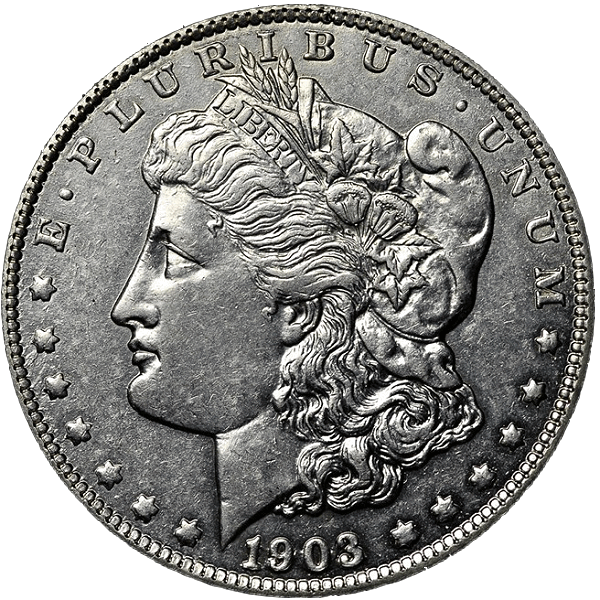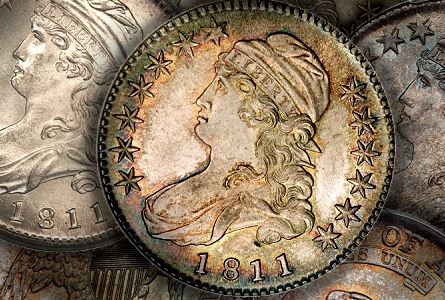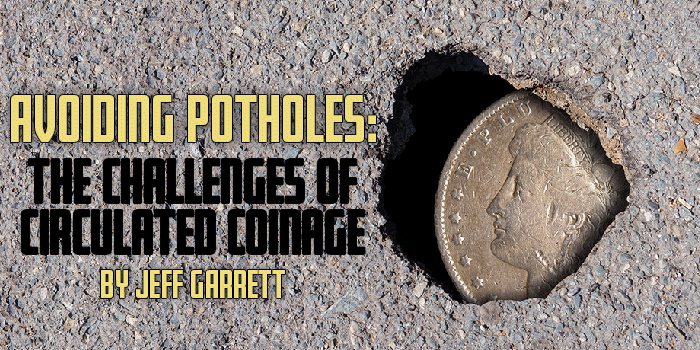Take the scenic route when collecting circulated coins
By Jeff Garrett for Numismatic Guaranty Corporation (NGC) ……
The most common advice any experienced numismatist will dispense is “buy the best you can afford.” I have shared this particular nugget of wisdom many times myself. In practice, it usually means trying to decide if you can afford MS 63, MS 64, MS 65 or higher-quality coins.
The market for rare coins is extremely skewed toward higher-quality specimens, and the price difference for the upper-grade echelons can be astounding. The emergence of the set registry concept has further expanded the demand for the highest-quality coins. Indeed, prices realized for superb examples can sometimes boggle the mind.
Most collectors generally identify a series of interest and then decide the best grade to collect. This usually means taking a look at the average prices for a particular grade and trying to decide if the project is feasible. Morgan silver dollars are a great example. Many of the dates in the series can be purchased for relatively modest prices in MS 63, but the prices jump considerably in MS 64. MS 65 coins are out of reach for all but the wealthiest collectors.
Consider the 1880-O Morgan silver dollar. The coin can be purchased for around $350 in MS 63, $1,350 in MS 64 and the price soars to over $15,000 in MS 65. The same pricing pattern is applicable to several of the “key” dates for the series.
This brings up the subject of this article: collecting circulated coinage. Even the most advanced Morgan dollar collectors often choose to locate an attractive, circulated example of the 1892-S and 1893-S Morgans to complete their sets.
These dates are usually considered “stoppers” for anyone trying to assemble a complete set of Morgan silver dollars in Mint State. The 1893-S Morgan starts at over $100,000 in MS 60 — if you can find one. Gem examples can reach half a million. A circulated example in XF 40 can be purchased for about $10,000. Many collectors are quite satisfied to assemble a Mint State set with the exception of a few dates that will always be out of reach financially.
The Road Less Traveled
Another road less traveled that Morgan silver dollar collectors may choose to take is assembling an evenly matched, circulated set. This can be much more challenging than one would think. Trying to find problem-free coins with attractive coloration that are solid for the grade can be tough. The project would probably take years to accomplish, regardless of your finances.
 In fact, several of the dates are actually much rarer in circulated condition than Mint State. The 1903-O and 1904-O Morgans did not enter circulation in large numbers. Most were stored in Treasury Vaults and were unknown to the numismatic world. This all changed when the coins were distributed at face value in the 1960s. The 1903-O Morgan silver dollar went from being one of the rarest in the series to being available for less than $20.
In fact, several of the dates are actually much rarer in circulated condition than Mint State. The 1903-O and 1904-O Morgans did not enter circulation in large numbers. Most were stored in Treasury Vaults and were unknown to the numismatic world. This all changed when the coins were distributed at face value in the 1960s. The 1903-O Morgan silver dollar went from being one of the rarest in the series to being available for less than $20.
Today, finding a Mint State example would only take a few clicks of the mouse. But try finding one in NGC XF 45 — good luck! A few old-timers can still relate stories of attempting to complete a set of Morgan silver dollars from circulation. Those days are long gone. Even those folks probably had to purchase many of the rare dates.
Avoiding Potholes
Most collectors choose which grade best suits their taste and budget. Some may try assembling a complete set in Mint State with a few circulated coins for the key issues. For many series, however, it is virtually impossible to collect the coins in Mint State condition, so the average collector chooses to collect them in the highest circulated grade possible.
 Collecting Capped Bust half dollars from 1807 to 1839 is an excellent example. This series is especially appealing for the average collector because the majority of the dates can be purchased for a modest sum in circulated condition. There are only a few really tough dates and no real stoppers. Many can be found for around $200 in Extremely Fine condition.
Collecting Capped Bust half dollars from 1807 to 1839 is an excellent example. This series is especially appealing for the average collector because the majority of the dates can be purchased for a modest sum in circulated condition. There are only a few really tough dates and no real stoppers. Many can be found for around $200 in Extremely Fine condition.
Trying to assemble a matched set of attractive coins is the real challenge. Circulated coins by nature are not usually found without some sort of problem. Another dealer recently sent me a hoard of around 400 uncertified Capped Bust half dollars in circulated condition for possible purchase. I was not able to complete the deal because of quality.
Only around 25% of the coins would have met the NGC standard for a circulated coin without having the “Details” designation added. Most of the coins had too many scratches, rims nicks, stains, cleaning or some other kind of problem. This is why certified coins are important even for collectors of circulated coins. Many with less expertise may not notice a grading flaw that will be costly down the road when selling a collection.
Attractive Coins Set the Pace
Collectors of circulated coins can — and should — be just as discriminating as those seeking only the finest-known examples. Most are very choosy about surfaces and vastly prefer coins that are original and uncleaned. Interestingly, a circulated coin with excellent surfaces can sell for substantial premiums, not unlike its Mint State counterpart.
For example, an 1825 Capped Bust half dollar graded NGC AU 58 from the Eric P. Newman Collection sold for $3,290 in 2013. The coin has a retail catalog value of $3,900 USD in MS 64. The Newman collection featured dozens of circulated Capped Bust half dollars with amazing color and surfaces that sold for record amounts. Circulated coins with attractive toning often bring multiples of catalog valuations. This trend is not restricted to Capped Bust half dollars. All denominations of Seated and Barber coinage experience similar results when extremely attractive examples come to market.
Another fascinating anomaly of the rare coin market is the incredible price collectors will pay for AU 58 coins for competition in the set registry programs. Often, coins in AU 58 will sell for more than MS 63 examples of the same date. As many collectors will find, completing some sets of United States coinage in Mint State is easier than finding perfect circulated examples.
“Original Skin” Versus Road Rash
Collecting circulated gold coins is another real challenge.
 Gold is very soft, and marks and scratches are the norms for most issues. Finding attractive examples with smooth surfaces is very difficult. Rim nicks are also a common nuisance and should be an area of concern. Many uncertified examples of scarce issues are found with filed (repaired) rims that can often be quite deceiving. This is yet another reason to insist on certified coins regardless of the grades you collect.
Gold is very soft, and marks and scratches are the norms for most issues. Finding attractive examples with smooth surfaces is very difficult. Rim nicks are also a common nuisance and should be an area of concern. Many uncertified examples of scarce issues are found with filed (repaired) rims that can often be quite deceiving. This is yet another reason to insist on certified coins regardless of the grades you collect.
By far the biggest problem with circulated United States gold coinage is that a large number have been cleaned over the decades. Finding examples with what many experts call “original skin” is quite difficult. Serious collectors of scarce-date circulated gold coins need to understand what this term means and how to recognize the difference. The coins with original surfaces will cost more, but when it is time to sell, you will be well rewarded.
The message to buy the best quality you can afford is still solid advice, but keep in mind it applies to coins at every grade level. The next time you purchase a circulated coin, consider the discussion above and examine as many examples as possible before making a final decision. Your patience will result in a more attractive collection and one that is probably a better investment.






